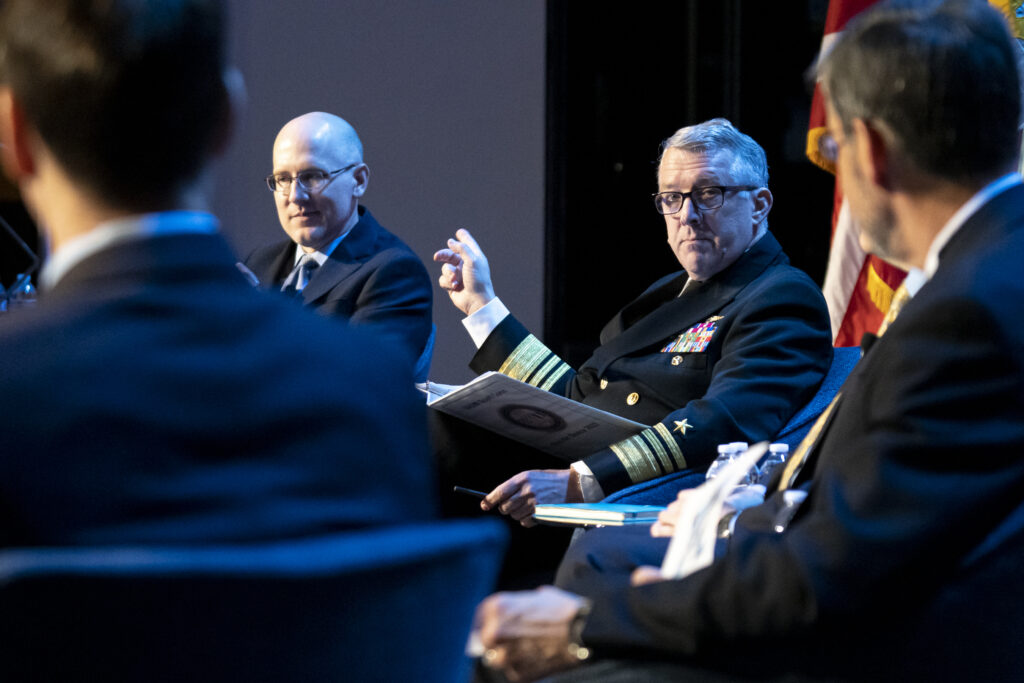
NATIONAL HARBOR, Md. — As unmanned systems continue to proliferate on the battlefield, understanding of their value has increased accordingly. They are force multipliers and perform dangerous missions that otherwise would place human operators in harm’s way. Their capabilities are increasing exponentially it would seem, as new technologies emerge and are incorporated into the inventory.
But these impressive tools come with a new set of challenges as well, which a panel of uniformed and industry experts addressed during a April 5 discussion at Sea-Air-Space 2022.
“Risks involve things like communications, logistics, training and infrastructure,” said Dr. Andrew Mara, the moderator, vice president for Federally Funded Research and Development Centers at the Center for Naval Analysis.
Vice Adm. Scott Conn, the Deputy Chief of Naval Operations for Warfighting Requirements and Capabilities, outlined the ongoing work of the service’s unmanned task force. Their job, he said, is to find ways to solve key operations problems across all domains.
“I’m a firm believer [that] some really clear, innovative solutions are going to come from the fleet,” Conn said. “Give them the tools. Let them learn. Let them provide us in the Pentagon and industry with feedback.”
As he described the ongoing work with unmanned undersea vehicles, gliders, surface vessels and other platforms, DARPA’s Dr. Kenneth Plaks emphasized the importance of having human operators trust their robotic assistants.
“I can see a future where it’s a human on the loop that says, ‘OK, go take care of that threat and let me know when it’s done,’ and it just does it.”
Plaks also mentioned the emergence of swarms of as many as 1,000 robotic vehicles and how managing them would require critical human command and control.
“We can accelerate unmanned in all domains,” said Dave Johnson, vice president of strategy at L3Harris, alluding to several projects in the works that would conduct live fire, counter-mine and other systems.
“There is a real progression of unmanned capability,” Johnson said.
It is important to keep in mind the missions that can be enhanced when developing unmanned platforms, said Jeffrey Hoyle, vice president of maritime systems at Elbit Systems of America.
“We need to continue to build trust, putting weapons on unmanned surface vehicles to do the types of things that platforms can do under guidance,” Johnson said. “The way to do that is to continue with this campaign of prototyping and experimentation. Extending reach, increasing lethality and enhancing the survivability of our people and existing platforms are the things we’re focused on.”
- Panelists: Tackling Challenges, Building Trust Will Proliferate Unmanned Capabilities - April 5, 2022
- Space: The Next Warfighting Domain - April 5, 2022
- Partnerships Key to Confronting Adversaries, Harker Says - August 4, 2021




